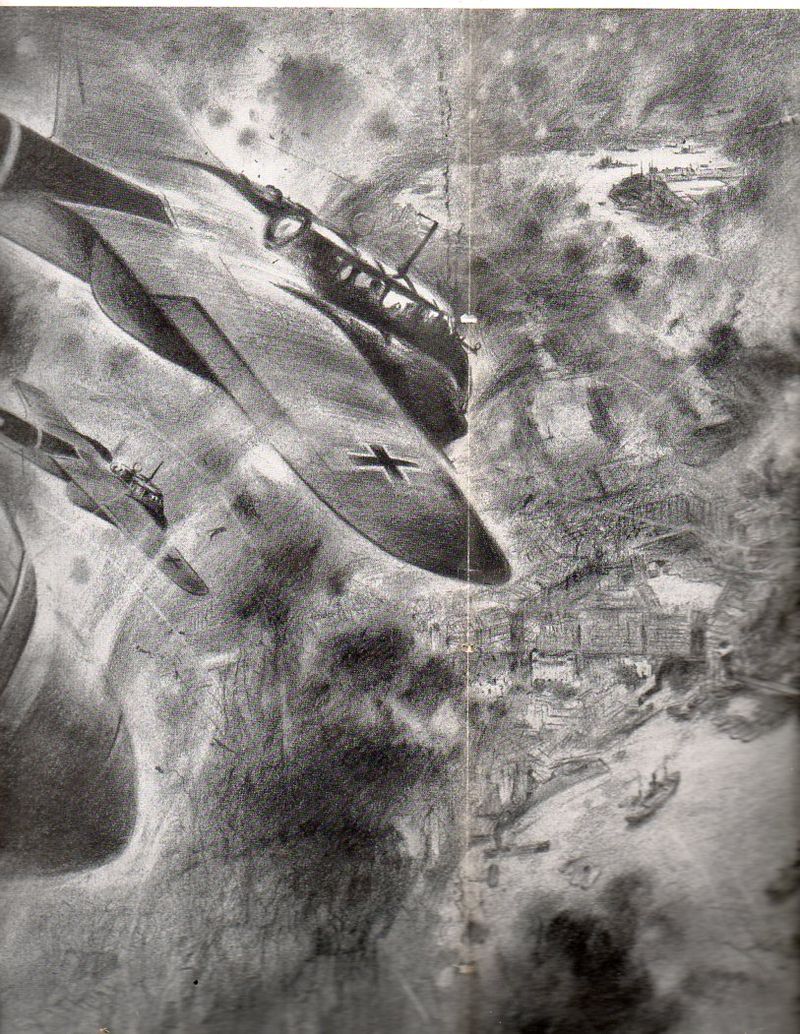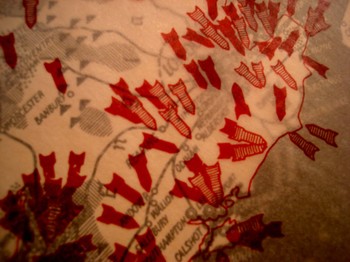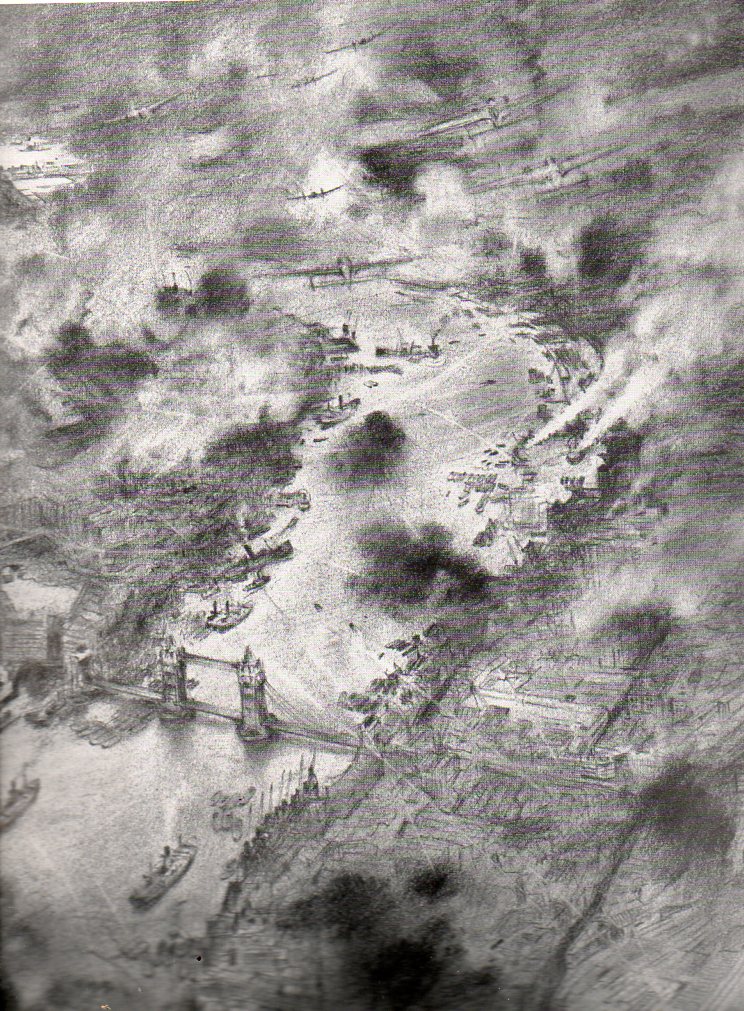ITEM: Illustrirte Zeitung, Leipzig, weekly issue for 3 October 1940. Pp 237-256. Illustrated. 15x11 inches. good copy. $75
JF Ptak Science Books Post 1337
Earlier in this blog I wrote a post on an illustrated article that appeared in the Illustriete Zeitung for 5 September 1940. On page 165 is an extraordinary two-part map, the upper part being a vellum-like overlay, showing the German bombardment of England. (“Bombenregen ueber England. England muss jetzt allein um seine insel Kaempfen…” ) The template map is in stark black and white, showing locations of “war” industries, chemical plants, rubber works, textile plants, metal industries and gas works . The overlay shows the outline of the island with 150 or so bombs, imprinted with a color code to show what sort of industry it was intended for.
By the time this issue of the Zeitung appeared, the Germans had almost spent themselves on their invasion of Britain (11 July-29 October 1940), and were well-past part two of a four-part invasion plane. The third part would begin two days after the appearance of this article, the clock already almost ticked-out on the Luftwaffe's ability to pound the Island Nation into submission. They felt out the defences in part I, while also bombing along the coast and into Liverpool and London itself, mining harbors and waterways, attacking convoys; part II continued the assault and probed and searched out the airfields, aircraft factories and radar sites (while continuing to mine the waters and bomb the cities). Part III continued the heavy assaults on Liverpool, London and other cities, and searched out the RAF--but the German losses were starting to mount up, and the RAF was beginning to win. On September 15, 185 German aircraft were lost--a huge event--and the plans for Operation Sea Lion were called off, suspended indefinitely. 
The 3 October issue of the Zeitung presented a large, two-page illustration of the Luftwaffe bombing London, which was suffering under the attack, flaming and smoking. But the image by this time was mostly propagandistic, the end of the campaign only weeks away, the German air force staggering under the British response.
The end result was a terrific victory for the Brits, far beyond what the numbers show, even if the numbers are strong. The U.K. losses included 544 aircrew killed, 422 aircrew wounded, and 1,547 aircraft destroyed. The Nazi losses were 2,698 aircrew killed, 967 captured (638 missing bodies identified by British Authorities) and 1,887 aircraft destroyed.
The Luftschlacht um England, the plan to overtake and destroy the British capacity in the air, was defeated. As long as the English had command of the airspace there would be no way that the Nazis could force an invasion by land/sea (at least in the minds of the Oberkommando der Wehrmacht and Hitler). And so the Nazis failed--it was their first major defeat, and, especially, with the turning of attention east, it was a pivotal point of the war.






Comments